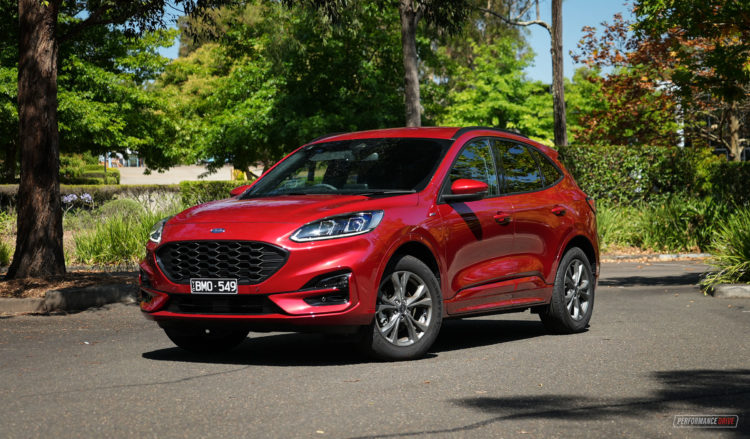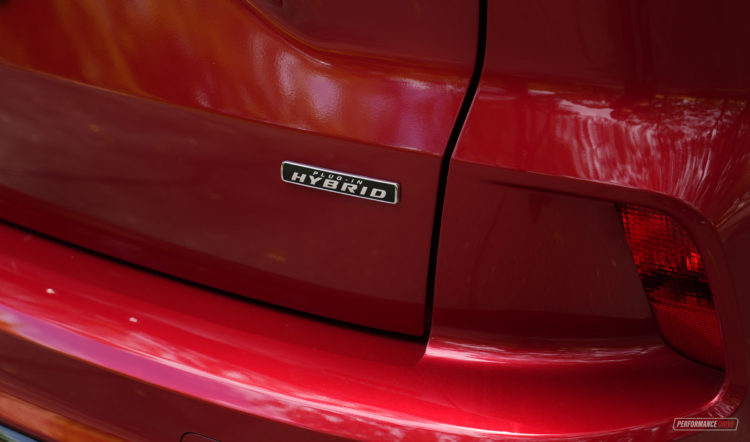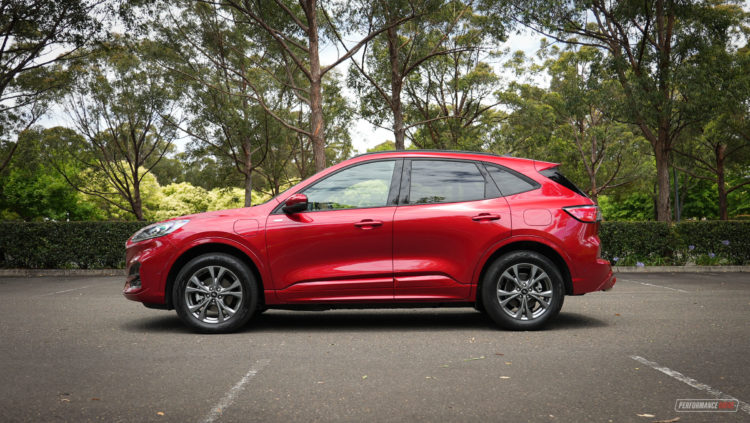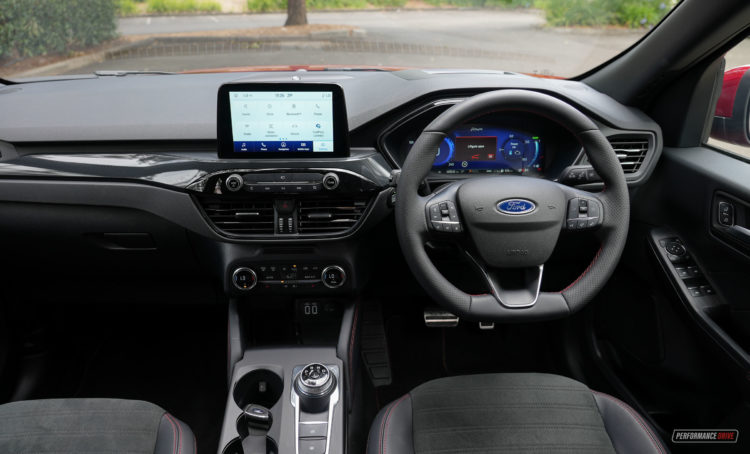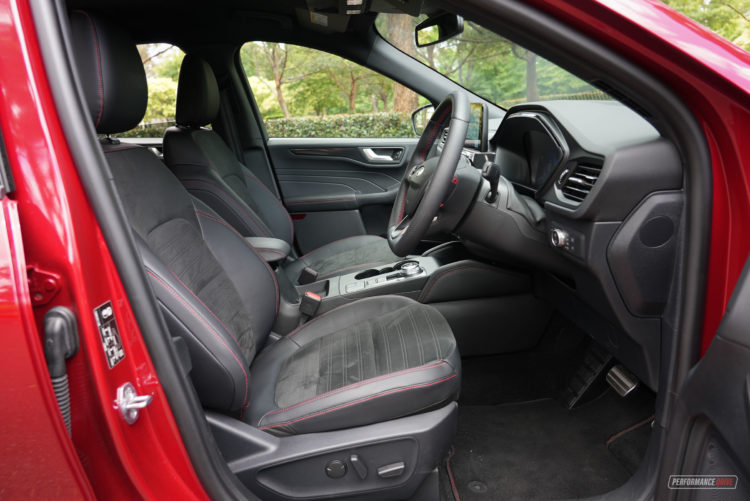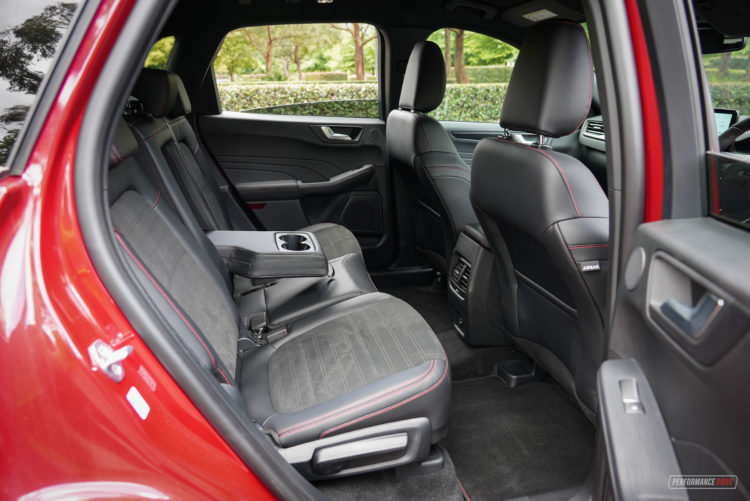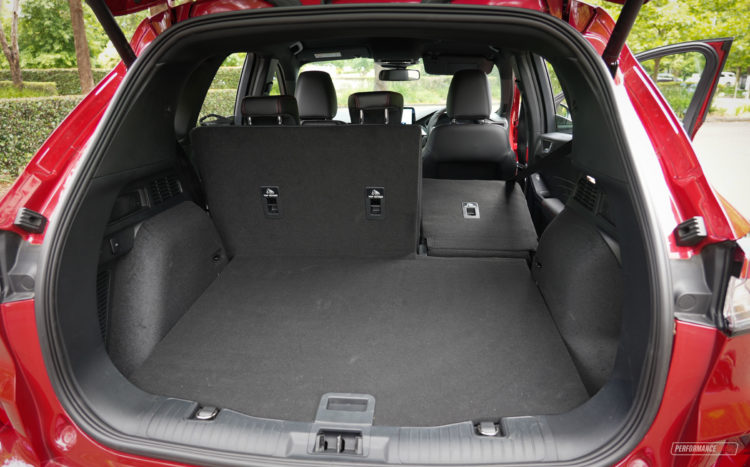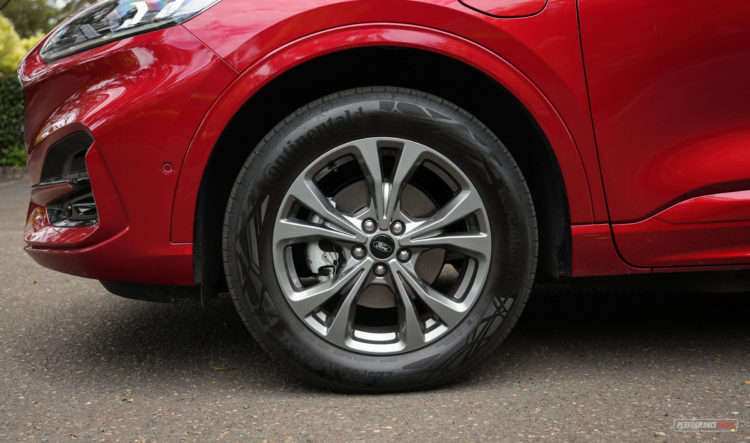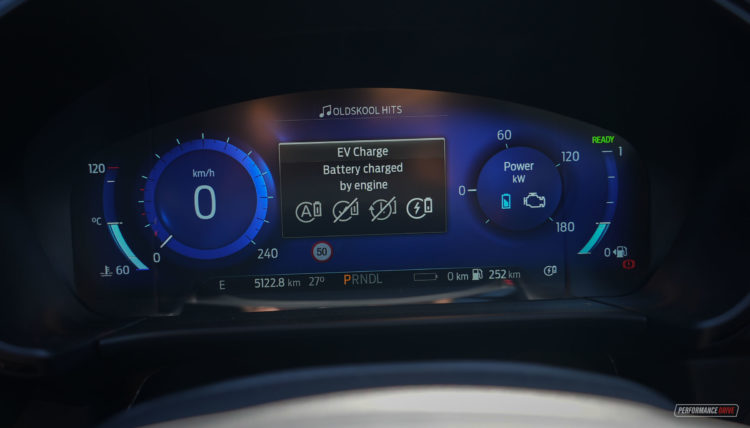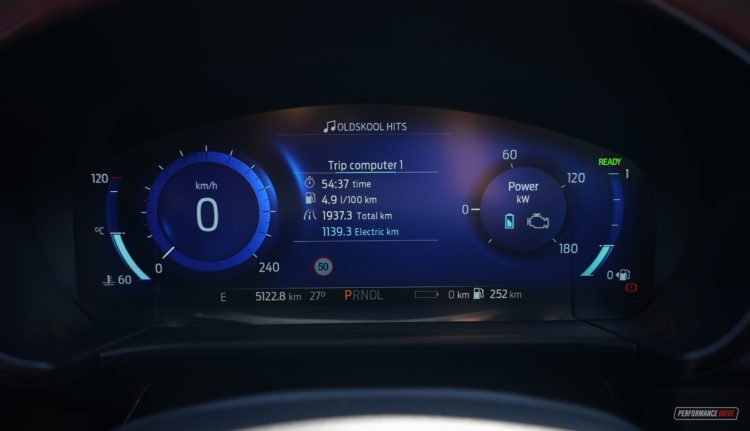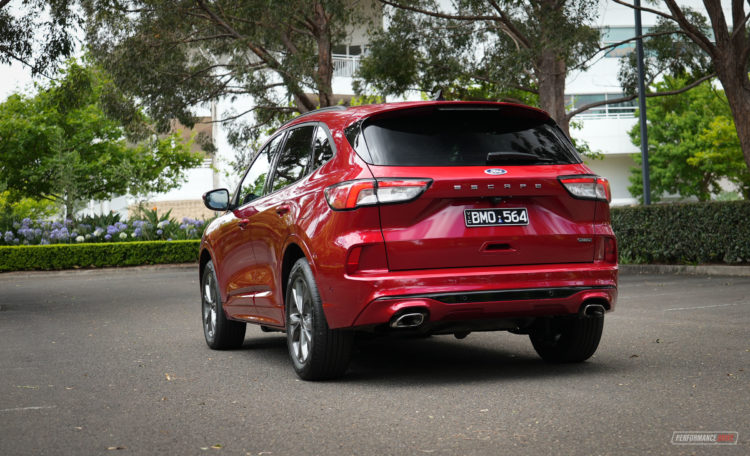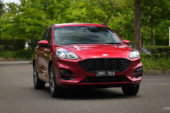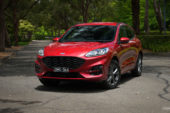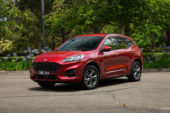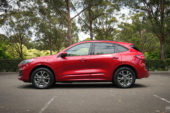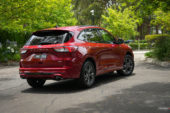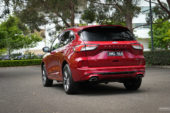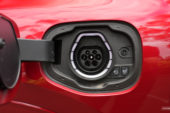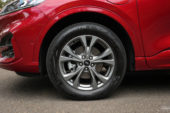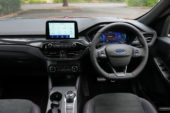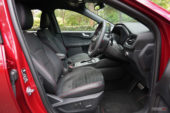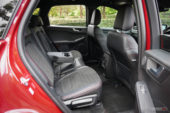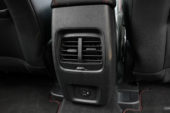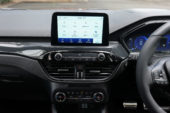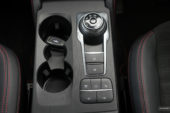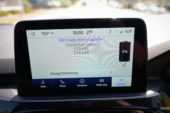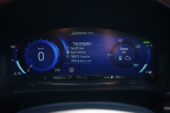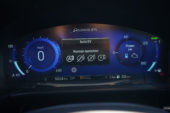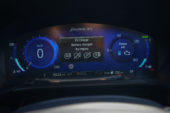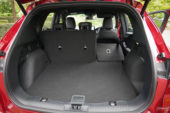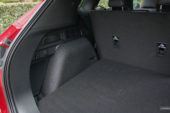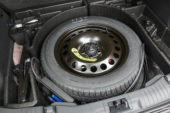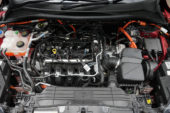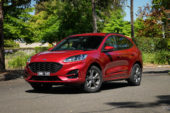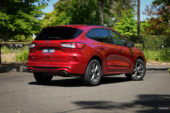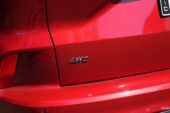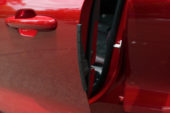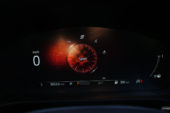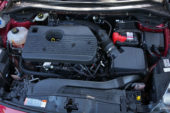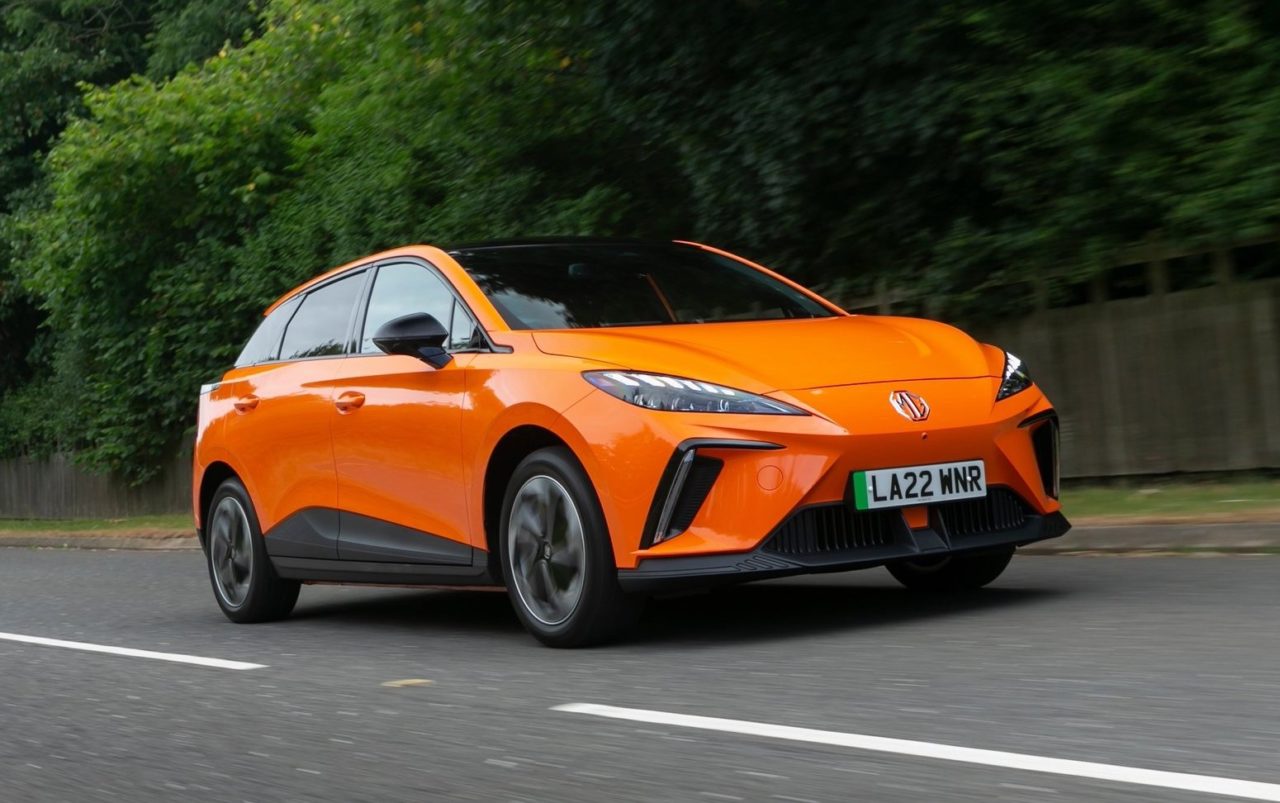In the highly oversaturated battleground of medium SUVs, the 2023 Ford Escape is a modest sales performer, having shifted 2179 units in 2022 – a 1.2 per cent improvement over its 2021 sales performance.
This has more to do with the cut-throat nature of the segment than any deficiencies on the part of the Escape, though you could be forgiven for thinking otherwise. The lineage of this nameplate can be traced back to the turn of the millennium, when it was twinned with the Mazda Tribute.
Available with either a 2.0-litre turbocharged four-cylinder engine or a novel plug-in hybrid, the Escape has some compelling powertrain options on paper. We tested both combinations in sporting ST-Line trim to see how this translates to daily usability in a variety of conditions.
Prices for the as-tested ST-Line 2.0T AWD kick off from a very reasonable $42,990, and from $54,940 for the sole FWD ST-Line PHEV option (excluding on-road costs).
2023 Ford Escape ST-Line AWD – THE SPECS
[column width=”47%” padding=”6%”]Engine: 2.0-litre turbo-petrol four-cylinder
Output: 183kW@5700rpm / 387Nm@3100rpm
Transmission: Eight-speed auto
Drive type: All-wheel drive
Wheels: F & R: 18 x 7.5, 225/60
ANCAP: Five stars
Tare weight: 1655kg
Power-to-weight: 9.04:1 (kg:kW)
Official fuel economy: 8.6L/100km
Economy during test: 8.0L/100km
Fuel capacity/Type: 57L/95 RON[/column] [column width=”47%” padding=”0″]Power efficiency: 21.27kW:L/100km
0-60km/h: 2.92 seconds*
0-100km/h: 6.38 seconds*
60-110km/h: 4.53 seconds*
1/4 mile: 14.59 seconds at 162.8km/h*
Max acceleration: 0.739g*
100-0km/h braking: 3.26 seconds at 40.74 metres*
Max deceleration: -1.218g*
Decibel at idle: 37*
Peak decibel at 60-100km/h: 84*
Priced from: $42,990[/column][end_columns]
2023 Ford Escape ST-Line PHEV – THE SPECS
[column width=”47%” padding=”6%”]Engine: 2.5-litre four-cylinder plug-in hybrid
Output (combined): 167kW
Transmission: CVT auto
Drive type: Front-wheel drive
Wheels: F & R: 18 x 7.5, 225/60
ANCAP: Five stars
Tare weight: 1815kg
Power-to-weight: 10.86:1 (kg:kW)
Official fuel economy: 1.5L/100km
Economy during test: 4.9L/100km
Fuel capacity/Type: 45L/95 RON[/column] [column width=”47%” padding=”0″]Power efficiency: 111.33kW:L/100km
0-60km/h: 4.46 seconds*
0-100km/h: 8.29 seconds*
60-110km/h: 5.14 seconds*
1/4 mile: 16.21 seconds at 149.5km/h*
Max acceleration: 0.621g*
100-0km/h braking: 3.13 seconds at 40.06 metres*
Max deceleration: -1.249g*
Decibel at idle: 26*
Peak decibel at 60-100km/h: 79*
Priced from: $54,940[/column][end_columns]
* Figures as tested by PerformanceDrive on the day. Factory claims may be different
2023 Ford Escape ST-Line PHEV & 2.0T AWD – THE PACKAGE
Although both models tested are sporty-flavoured ST-Line trim, they differ significantly in powertrains, rear suspension layout and option packages selected.
Starting with the plug-in hybrid, it makes a combined 167kW at 6250rpm, through the combination of a 127kW, 2.5-litre, Atkinson-cycle four-cylinder engine and electric motors. It has a 14.4kWh battery pack which can be recharged at public power stations and can provide 56km of electric driving alone. A maximum charge rate of 3.7kW is comparable to other plug-in hybrids on the market, such as the Mitsubishi Outlander PHEV and the MG HS +EV.
The 2.0-litre turbo AWD, meanwhile, produces 183kW at 5700rpm and 387Nm at 3100rpm, connected to a conventional eight-speed automatic. One thing we didn’t count on was how quick it was. In our 0-100km/h testing, it knocked our former medium SUV runner-upr champ, the Holden Equinox (6.78 seconds), off its podium to snag silver behind the latest Peugeot 3008 PHEV (5.70). We tested the FWD version of the Escape before and, expectedly, the AWD model tested here was able to make better use of its extra grip. But not by much. Our best result in this was 6.38 seconds, compared with 6.41 in the FWD Vignale. The ST-Line FWD, with slightly narrower tyres compared with the Vignale, managed it in 6.44 seconds.
At 4620mm long, 1883 mm wide and 1666mm tall, the Escape offers good, if not class-leading accommodation front and rear, making the most of the 2710mm wheelbase. Luggage space is 556 litres with the seats up, or 1478L when they are folded via the handy boot-mounted levers. We would’ve appreciated some additional storage or tie-down nets, however.
At least the PHEV offers a space-saver spare, unlike some competitors that present only a repair kit. A dedicated location for the on-board 240V charger wouldn’t have gone astray. Both models offer braked towing packages, with the 2.0T AWD able to pull 1800kg, versus 1200kg for the PHEV.
The plug-in hybrid is equipped with two available optional packs : ST-Line option pack and Park pack, which includes auto high-beam and HUD, power tailgate and heated front seats, active park assist, front camera and Skoda-esque door-edge guards. All up, these option packages add $1500 plus $1950 to the bill. The Park pack is only available with the PHEV.
Compared with the AWD 2.0T, the hybrid has a few extra standard features to distinguish it, namely a 10-way power-adjustable driver seat, artificial leather upholstery and 10-speaker B&O sound system.
Both vehicles feature sporty 18-inch alloys with Continental 225/60 tyres, side skirts and a rear spoiler. Inside, a premium stitched ST-Line steering wheel, alloy pedals and sat-nav with traffic updates are also present and accounted-for. Curiously for a sporty model, the Escape ST-Line features an EV-esque rotary shifter, but at least the AWD features paddles as well.
Inside, the interior layout is functional but not what you would call premium. An over-abundance of scratchy, hard plastics puts this cabin below class-average for perceived quality. Other bugbears are ergonomic, including the lack of a ‘source’ button for the stereo, making it distracting to toggle between audio modes. At least the steering wheel feels nice to hold.
The front seats offered less-than-stellar support and long distance comfort, it must be said. Luckily you can set up a snug driver’s position thanks to the adjustability of the steering column and seat movements.
Ford offers a five-year/unlimited kilometre warranty, with the first four years of servicing capped at $299. Another ownership advantage touted by the blue oval is the Ford Loan Car Program, and SYNC 3 map updates and motoring club membership.
Safety is catered for by all the expected ADAS systems such as adaptive cruise, lane keep assist, blind-spot alert, rear cross-traffic alert, AEB and six airbags. It has been awarded the full five-star ANCAP rating, which you can read more about in the full report here.
2023 Ford Escape ST-Line PHEV & 2.0T AWD – THE DRIVE
This is the section where you would expect a Ford to shine, and the Escape certainly does in some ways, but not necessarily in the manner we have been accustomed to from Ford. The Spanish-made Escapes both impressed more with their drivetrains than chassis performance, which we find to be competent rather than truly engaging.
Starting with the AWD, this is the only drivetrain configuration which offers multi-link rear suspension, rather than a simple twist beam of the PHEV and FWD variants. As you might expect, mid-corner grip and power-down traction are very good. High speed stability also feels on par with expectations for a European car. The electrically-assisted steering is direct and offers reasonably good feel, but not the superb level of connection Fords are usually renowned for. It’s also very responsive to turn, at times too sensitive. Overall, it scores just above average for dynamics in our view.
Cabin refinement is decent, with minimal wind and tyre noise entering the cabin at speed, with bump absorption expectedly good, considering the higher ride height and despite the taut ST-Line suspension tune. We’d stop short of calling it plush but no major complaints.
Despite the PHEV weighing some 160kg more, at 1815kg (tare) versus 1655kg in the AWD, the driving behaviour is remarkably similar between the two vehicles, with scant perceptible benefit of the multi-link IRS of the AWD.
We’ve already touched on the outstanding performance of the 2.0-litre AWD, but it is about more than just acceleration figures. At any given time, response is lag-free and instantaneous. Mid-range acceleration and the way it builds a head of steam exceeds expectations for a mid-size SUV. The noise is never intrusive or unpleasant, either. The eight-speed automatic has well-judged ratios and is genuinely fun to operate with the paddles. We would love to see a sporty, proper ST version of this car.
Even the plug-in hybrid offers a surprisingly enjoyable drive. Far from being the nerdy cousin of the 2.0T AWD, it has plenty of tricks up its sleeve to offer a different form of driver engagement. Off-the-line shove is always on call thanks to the instant torque of the electric motors, with the 2.5-litre Atkinson Cycle four-cylinder motor proving a refined companion when it steps in for duty. We timed 0-100km/h in a best of 8.29 seconds.
Featuring regenerative braking, there is an ‘eco coach’ which gives you a score depending on how much energy you feed back into the battery. We found it rewarding to apply a late and heavy braking approach the most, and allowing the regeneration to do its thing. This is one of the new and novel ways EVs and hybrids promote a different form of driver interaction. Speaking of brakes, the modulation and pedal feel is exceptional for a PHEV/electric vehicle. Full marks here to Ford.
Four additional driving modes exist for the PHEV, on top of Normal, Eco and Sport modes available in both. These are Normal operation, EV Later, All Electric driving and EV Charge. These are pretty self-explanatory, but Normal operation offers a balanced mix between EV and petrol, EV Later preserves the battery, still using it very sparingly to launch the car off the line, EV Charge uses the onboard generator to convert petrol to electricity to be stored in the 14.4kWh battery, at the expense of higher fuel consumption.
The versatility of this hybrid system is remarkable and competitive with most rivals. Even when you don’t plug it in, it can still achieve a real world fuel consumption in the 5-6L/100km range. It uses the on-board generator and brake regen to operate like a normal, non-plug-in hybrid. The sweet spot of all the modes, from an efficiency viewpoint would have to be EV Later in Eco, or Normal operation if you can charge the car every day while at work. A middle ground between EV Later and Normal operation would be ideal for a daily commute, in our opinion.
Overall consumption, with one week of plugging in and one week running the car normally averaged about 4.8- 5.1L/100km during our test. Impressive for sure. Compare that with the 5.8L/100km average the last time we tested the Toyota RAV4 hybrid, and you can see there is a tangible real-world benefit to the plug-in arrangement.
Considering the major performance advantage, the 2.0T AWD blows us away with its fuel economy. Featuring a larger 57L tank compared with 45L for the PHEV, the 2.0-litre direct injection turbo engine is officially rated at 8.6L/100km, but we saw far better numbers during our time with the car.
The stop-start system assists in heavy traffic, and isn’t too slow to re-engage the engine. During a long freeway trip from Canberra to Sydney, we saw numbers as low as 5.9L/100km, with moderate hypermiling (pulse-and-glide downhill, intermittent A/C usage) while managing the speed limit. Adaptive cruise, speed limit control and lane-keep assist made for effortless mile-eating as well.
2023 Ford Escape ST-Line PHEV & 2.0T AWD – THE VIDEO
2023 Ford Escape ST-Line PHEV & 2.0T AWD – THE VERDICT
It’s lucky to have both the PHEV and 2.0T AWD versions of the Ford Escape ST-Line in Australia. The respective powertrains make it easy to recommend; class-leading performance in the case of the AWD and brilliant real-world efficiency in the case of the PHEV.
From a value standpoint, they both do very well in terms of purchase price and overall ownership costs, despite their European origins. This may be where Ford’s globalist approach pays off, to the detriment of dynamic thrills or stunning design.
To decide between the two, assess what your use-case is; do you have the ability to charge at work or home? There is a multitude of hybrid and non-hybrid rivals in this segment, all offering different approaches. The Escape ST-Line PHEV combines up-to-the-minute technology and packages it in a way that doesn’t compromise the core functionality of the car.
It may not have the best interior in its class or the most attractive design but what it does have it ties together well, for low purchase and operating cost. A well-deserved position in the medium SUV segment, and certainly worthy of consideration for shoppers.
[column width=”47%” padding=”6%”]PROS:
– Competent dynamics
– Outstanding performance and good economy for 2.0T AWD
– Outstanding economy in the PHEV
– Well-integrated ADAS systems
– B&O sound system in PHEV sounds great
– Great value
[/column] [column width=”47%” padding=”0″]CONS:
– Not quite as engaging to drive as Fords used to be
– Interior material quality below class standards in some areas
– Sporty ‘ST-Line’ flavour spread very thin[/column][end_columns]
As always, if you’re thinking about buying a new car don’t forget to click here to speak with our car buying specialists.
